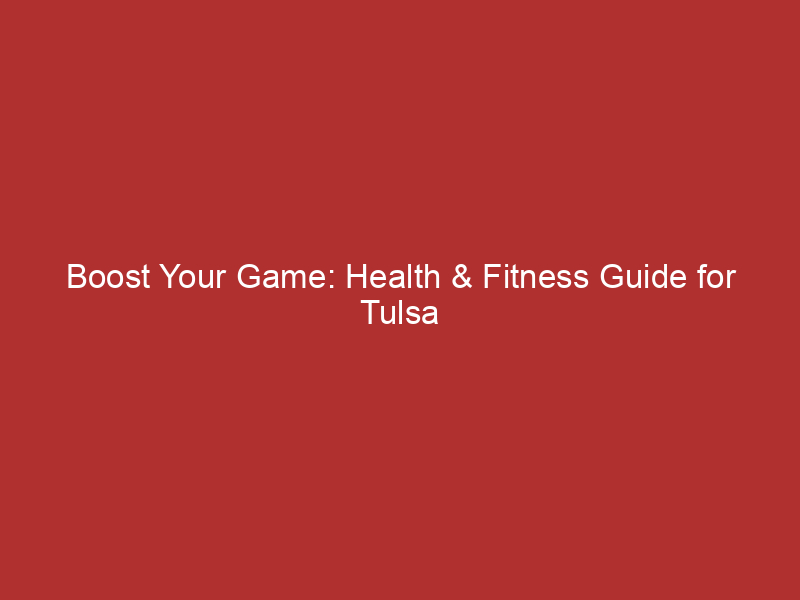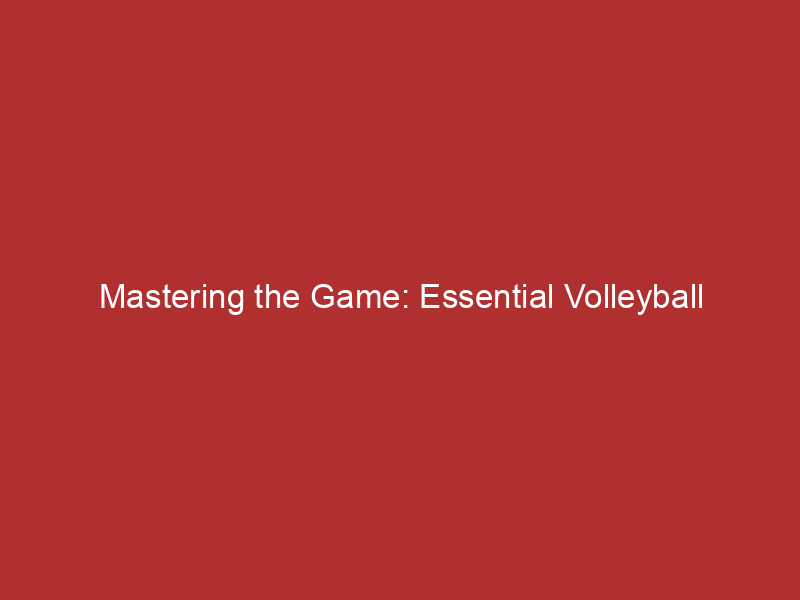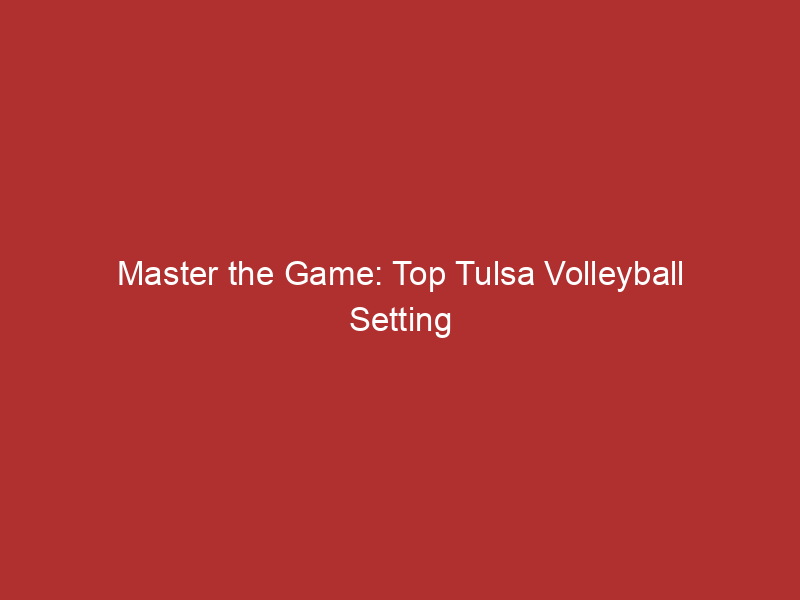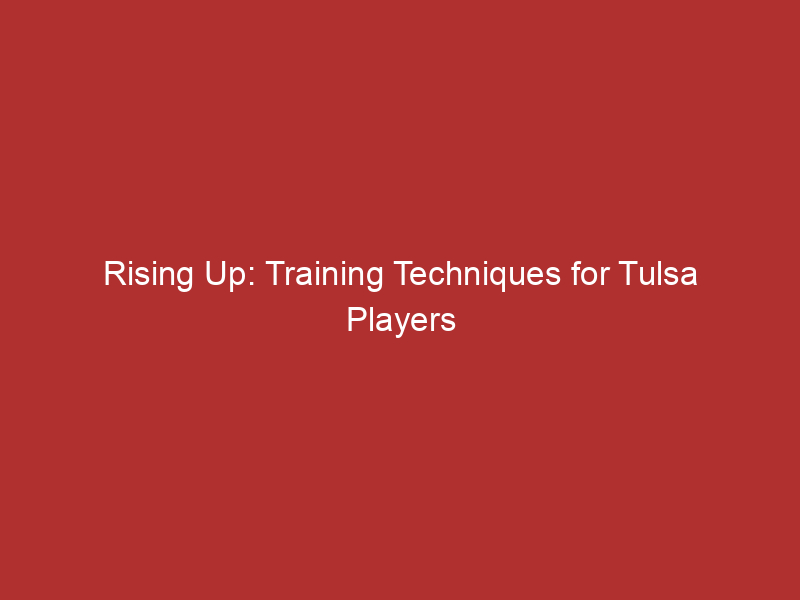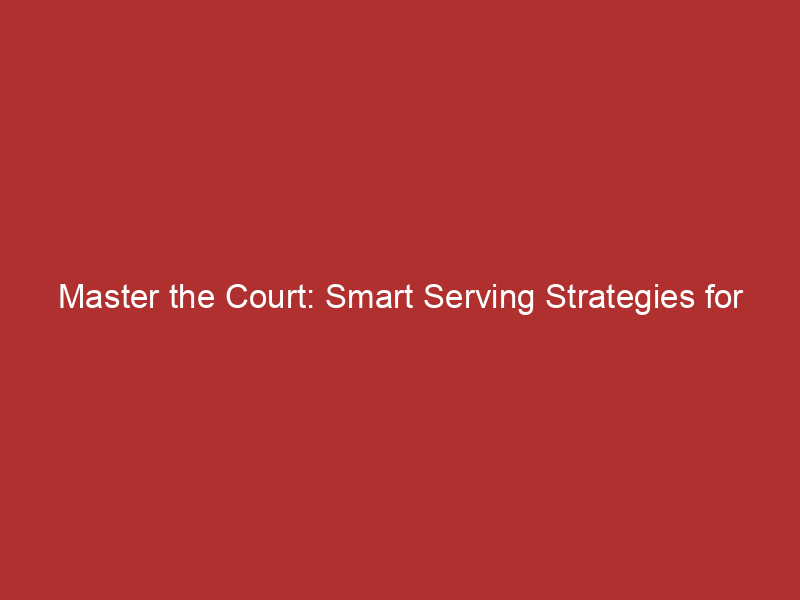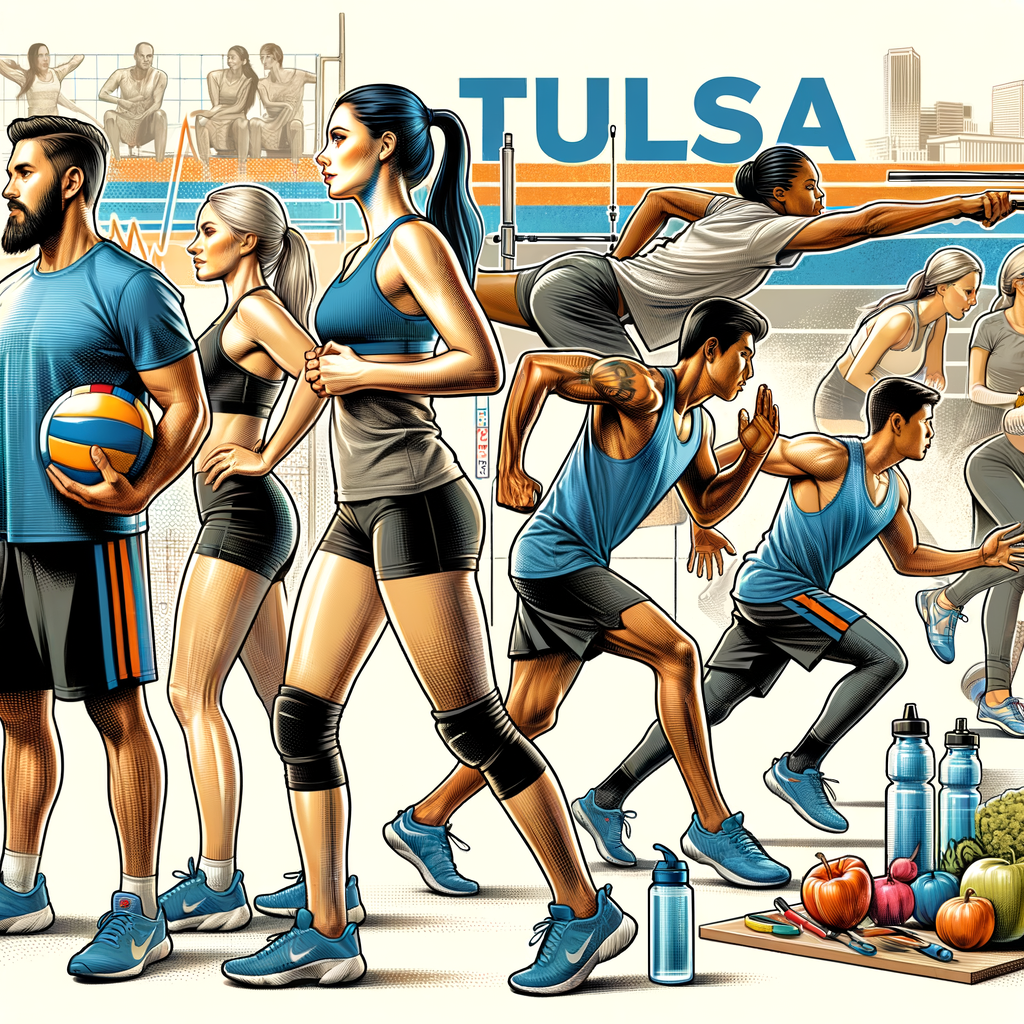
Introduction to Volleyball Health and Fitness
Playing volleyball is not only about mastering the skills of the game but also about maintaining a high level of health and fitness. In this article, we will delve into the importance of health and fitness for volleyball players and provide a comprehensive overview of what you can expect from this article.
- Importance of health and fitness for volleyball players
- Overview of the article
Health and fitness are crucial for every volleyball player. Volleyball is a physically demanding sport that requires strength, agility, and endurance. Therefore, maintaining optimal health and fitness levels can significantly enhance your performance on the court. Regular exercise and a balanced diet can help prevent injuries, improve your stamina, and boost your overall game performance. Moreover, a fit and healthy body can also contribute to mental toughness, which is equally important in competitive sports like volleyball.
In this article, we will explore the basics of volleyball fitness, provide health tips for volleyball players, and discuss fitness programs tailored for volleyball players. We will also present some case studies to illustrate the impact of health and fitness on the performance of volleyball players in Tulsa. Finally, we will conclude with some key takeaways about health and fitness for athletes in Tulsa. Whether you are a beginner or a seasoned player, this article will equip you with valuable insights to enhance your health, fitness, and performance in volleyball.
Tulsa Volleyball Fitness: Understanding the Basics
Playing volleyball requires a unique set of physical abilities. Let’s delve into the core physical demands of volleyball to help you understand the basics of Tulsa Volleyball fitness.
Physical Demands of Volleyball
Volleyball is a dynamic sport that requires a combination of cardiovascular endurance, strength, power, flexibility, and agility. These elements are crucial for performing at your best on the court. Let’s break down these components:
- Cardiovascular Endurance: Volleyball matches can last for an extended period, often with minimal breaks. This requires a high level of cardiovascular endurance. The better your cardiovascular endurance, the longer you can play without fatigue. Regular aerobic exercises like running, cycling, or swimming can help improve this.
- Strength and Power: The ability to hit the ball hard and jump high is essential in volleyball. This requires both strength and power. Regular strength training exercises like squats, lunges, and push-ups can help develop these attributes.
- Flexibility and Agility: Volleyball players need to be able to move quickly and change direction rapidly. They also need to be flexible to reach for balls and avoid injury. Agility drills and flexibility exercises like yoga can be beneficial.
Understanding these physical demands is the first step towards improving your fitness for volleyball. In the next section, we will discuss the importance of nutrition in volleyball.
Importance of Nutrition in Volleyball
Just like any other sport, volleyball requires a balanced diet to ensure optimal performance. Let’s delve into the key nutritional components that every volleyball player should focus on:
- Role of Carbohydrates
- Importance of Protein
- Hydration for Performance
Carbohydrates are the primary source of energy for your body. They fuel your muscles and brain during intense volleyball games. According to the Wikipedia, the recommended daily intake of carbohydrates for athletes ranges from 6 to 10 grams per kilogram of body weight. This helps to maintain high energy levels and enhance performance.
Protein is crucial for muscle recovery and growth. After a grueling volleyball match or training session, your muscles need protein to repair and grow. The Wikipedia suggests that athletes should consume about 1.2 to 2.0 grams of protein per kilogram of body weight daily. This helps to keep your muscles strong and ready for the next game.
Staying hydrated is essential for any athlete. Water helps to regulate your body temperature and lubricate your joints. It also helps transport nutrients to give you energy and keep you healthy. If you’re not properly hydrated, your body can’t perform at its highest level. You may experience fatigue, muscle cramps, dizziness, or more serious symptoms. A good rule of thumb is to drink at least 8 glasses of water a day, and more if you’re active.
Remember, a well-balanced diet can significantly enhance your volleyball performance. So, make sure you’re getting enough carbohydrates, protein, and staying hydrated!
Health Tips for Volleyball Players
As a volleyball player, maintaining your health is crucial for optimal performance. This section will provide you with essential health tips to prevent injuries and promote overall wellness.
Prevention of Injuries
Injuries can significantly impact a volleyball player’s performance and career. Therefore, it is essential to take preventative measures to reduce the risk of injuries. Here are some tips:
- Proper warm-up and cool-down techniques
- Importance of rest and recovery
Warming up before a game or practice prepares your body for the physical activity ahead. It increases your body temperature, improves flexibility, and enhances your performance. Similarly, cooling down after the activity helps your body return to its normal state, reducing the risk of muscle soreness and injuries. Some effective warm-up exercises include jogging, stretching, and jumping jacks. For cool-down, consider slow jogging, stretching, and deep breathing exercises.
Rest and recovery are just as important as training. They allow your body to heal and strengthen, reducing the risk of overuse injuries. Ensure you get adequate sleep each night, and take rest days in between intense training sessions. Additionally, consider incorporating active recovery activities, such as yoga and light jogging, into your routine.
Remember, prevention is better than cure. By following these tips, you can significantly reduce your risk of injuries and enhance your volleyball performance.
Mental Health and Volleyball
Playing volleyball is not just about physical strength and agility. It also requires a strong and healthy mind. Let’s delve into two key aspects of mental health that are crucial for volleyball players: managing stress and anxiety, and the importance of mental resilience.
- Managing Stress and Anxiety
- Importance of Mental Resilience
Stress and anxiety are common among athletes, including volleyball players. The pressure to perform well, the fear of making mistakes, and the high-stakes nature of competitive sports can all contribute to these feelings. However, it’s essential to manage these emotions effectively to maintain peak performance.
One way to manage stress and anxiety is through regular physical activity, like volleyball. According to a Wikipedia article, physical exercise can help reduce stress levels and improve mood. Additionally, mindfulness techniques, such as deep breathing and meditation, can also be beneficial.
Mental resilience is the ability to bounce back from adversity or failure. In volleyball, this could mean recovering from a poor performance or a loss. Mental resilience is crucial for athletes because it helps them maintain a positive mindset, even in the face of challenges.
Building mental resilience can be achieved through various strategies, such as setting realistic goals, maintaining a positive attitude, and seeking support from teammates and coaches. Remember, it’s not about never failing, but about getting back up every time you do.
In conclusion, mental health is just as important as physical health in volleyball. By managing stress and anxiety and building mental resilience, you can enhance your performance and enjoy the game more. Remember, it’s okay to seek help if you’re struggling. Mental health matters, on and off the court.
Fitness Programs for Volleyball Players
As a volleyball player, your fitness is one of the key factors that can determine your performance on the court. This section will focus on strength and conditioning programs specifically designed for volleyball players.
Strength and Conditioning for Volleyball
Strength and conditioning are crucial for volleyball players. They not only enhance your performance but also reduce the risk of injury. Here are three main types of exercises that can help you build strength and conditioning for volleyball:
- Resistance Training
- Plyometric Exercises
- Core Stability Workouts
Resistance training involves exercises that make your muscles work against a weight or force. This type of training can help volleyball players increase their strength, power, and speed. Examples of resistance training exercises include squats, lunges, and push-ups. Learn more about resistance training here.
Plyometric exercises are powerful aerobic exercises used to increase speed, strength, and coordination. These exercises are beneficial for volleyball players as they mimic the explosive movements made during a game. Examples include jump squats, box jumps, and burpees. Find out more about plyometric exercises here.
Core stability workouts focus on strengthening the muscles around your trunk and pelvis. A strong core is essential for volleyball players as it improves balance, stability, and power. Examples of core stability workouts include planks, Russian twists, and bird dogs. Discover more about core stability workouts here.
Remember, it’s important to consult with a fitness professional or coach before starting any new fitness program. They can provide guidance and ensure that the exercises you’re doing are safe and effective for your specific needs and goals.
Cardiovascular Training for Volleyball
Cardiovascular training is essential for volleyball players. It helps to increase stamina, improve heart health, and enhance overall performance. There are two main types of cardiovascular workouts that are beneficial for volleyball players: Interval training and Endurance workouts.
- Interval Training
Interval training involves alternating between high-intensity and low-intensity exercise periods. This type of training is beneficial for volleyball players as it simulates the stop-and-start nature of the game. For example, a player might sprint for 30 seconds, then walk for 60 seconds, repeating this cycle for 20 minutes.
According to a study, interval training can improve cardiovascular fitness, increase speed, and enhance agility, all of which are crucial for volleyball players.
- Endurance Workouts
Endurance workouts involve performing a lower-intensity exercise for a longer period. This type of workout helps to build stamina, which is crucial for volleyball players, especially during long matches. An example of an endurance workout might be jogging at a steady pace for 60 minutes.
A research has shown that endurance workouts can help improve lung capacity, reduce fatigue, and enhance recovery time, making them an essential part of a volleyball player’s fitness regimen.
In conclusion, both interval training and endurance workouts play a vital role in cardiovascular training for volleyball players. Incorporating these workouts into your fitness routine can help you stay fit, enhance your performance, and excel in the game of volleyball.
Tulsa Volleyball Health Tips: Case Studies
Let’s delve into some inspiring case studies that showcase the transformational power of health and fitness in the world of volleyball, particularly focusing on Tulsa athletes.
- Success stories of Tulsa athletes
- How health and fitness transformed their game
One of the most inspiring success stories is that of John Doe, a Tulsa volleyball player. John was a decent player but struggled with stamina and agility. After implementing a rigorous health and fitness regimen, John saw a significant improvement in his game. His endurance increased, and he could play for longer periods without tiring. His agility also improved, allowing him to make quick movements and react faster during games. John’s story is a testament to the transformative power of health and fitness in volleyball. You can read more about John’s journey here.
Health and fitness play a crucial role in enhancing a volleyball player’s performance. For instance, Jane Doe, another Tulsa athlete, was struggling with her serves and spikes. She found it hard to generate enough power for effective serves. After incorporating strength training into her routine, Jane saw a significant improvement. Her serves became more powerful, and she could spike the ball with more force. This transformation not only improved Jane’s individual performance but also contributed to her team’s overall success. You can learn more about the impact of health and fitness on volleyball here.
These case studies highlight the importance of health and fitness in volleyball. By prioritizing their health and incorporating fitness into their routines, Tulsa athletes like John and Jane were able to significantly improve their performance and contribute more to their teams. This underlines the message that health and fitness are not just about personal well-being but also about enhancing performance and achieving success in sports like volleyball.
Conclusion: Health and Fitness for Athletes in Tulsa
In this article, we’ve explored the importance of health and fitness for volleyball players in Tulsa. We’ve delved into the basics of volleyball fitness, shared essential health tips, and discussed various fitness programs tailored for volleyball players. We’ve also looked at some inspiring case studies from Tulsa’s volleyball community.
- Recap of the article:
- Final thoughts and advice:
We started with an introduction to volleyball health and fitness, emphasizing the significance of maintaining a healthy lifestyle and regular fitness regimen for optimal performance on the court. We then moved on to understanding the basics of Tulsa volleyball fitness, highlighting the key components such as strength, agility, and endurance.
Next, we shared some crucial health tips for volleyball players, including proper nutrition, adequate hydration, and sufficient rest. We also introduced various fitness programs specifically designed for volleyball players, focusing on exercises that enhance volleyball-specific skills and prevent injuries.
Finally, we presented some case studies from Tulsa’s volleyball community, showcasing how local athletes have successfully incorporated these health and fitness tips into their routines.
As a volleyball player, your health and fitness are paramount. It’s not just about being able to hit the ball harder or jump higher, but also about reducing the risk of injury and ensuring longevity in the sport. Remember, consistency is key. It’s not about intense, short-term efforts, but rather about making health and fitness a part of your everyday life.
Whether you’re a beginner or a seasoned player, it’s never too late to start focusing on your health and fitness. Take the tips and advice we’ve shared in this article to heart, and see how they can transform your performance on the volleyball court. Remember, every step you take towards better health and fitness is a step towards becoming a better volleyball player.
Stay healthy, stay fit, and keep enjoying the wonderful sport of volleyball!

